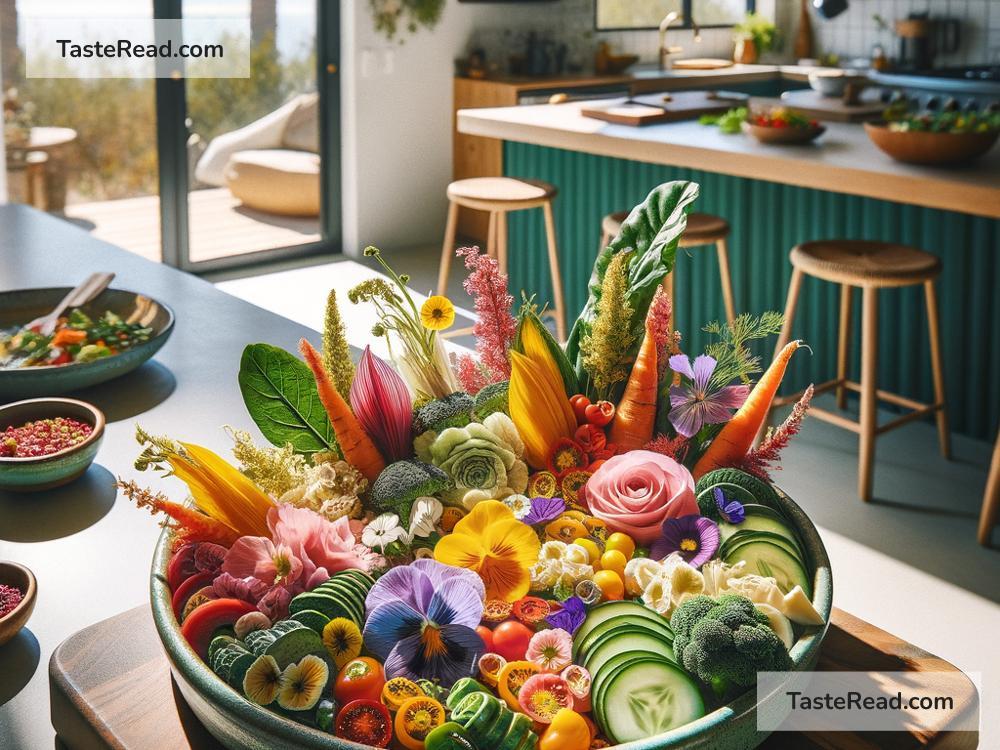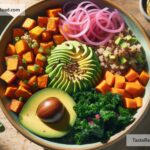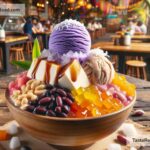Exploring Edible Flower Creations in Modern Vegan Kitchens in California, USA
California is famous for its sunshine, beautiful landscapes, and innovative food culture. From avocado toast to plant-based burgers, the Golden State has always been on the cutting edge of food trends. One unique trend catching the attention of vegan chefs and food lovers is the use of edible flowers in cooking and baking. These vibrant blossoms can elevate any dish, adding color, flavor, and a touch of elegance. In this blog, we’ll explore how edible flowers are transforming vegan kitchens in California, inspiring creative and healthy culinary choices.
What Are Edible Flowers?
Edible flowers are blossoms that are safe to eat and add unique flavors to dishes. Some of the most popular edible flowers include:
- Lavender: Known for its calming scent, lavender has a subtle floral flavor that pairs well with both sweet and savory dishes.
- Rose petals: Sweet and fragrant, rose petals can be used in desserts and even infused into drinks.
- Calendula: Sometimes called “poor man’s saffron,” calendula has a mild peppery taste and vibrant orange color.
- Nasturtiums: These bright flowers have a spicy, peppery flavor similar to arugula.
- Pansies: Delicate in flavor, pansies are often used as they look beautiful on cakes and salads.
Edible flowers are not just pretty decorations—they can add complex flavors and textures to vegan meals, turning them into true works of art.
Why Edible Flowers Are Popular in Vegan Kitchens
California has a long tradition of plant-based eating, and the use of edible flowers fits right in. There are several reasons why chefs and home cooks are experimenting with these colorful blooms:
-
Visual Appeal: Edible flowers make meals look stunning. Vegan chefs love using them to decorate dishes, creating eye-catching plates that are perfect for social media posts. A simple salad or dessert can look like a masterpiece when adorned with colorful petals.
-
Flavor Boost: Flowers bring unique flavors to vegan dishes, from sweet and floral to spicy and citrusy. They add depth to recipes without relying on animal products or processed ingredients.
-
Health Benefits: Many edible flowers have vitamins, antioxidants, and medicinal properties. For example, hibiscus is rich in vitamin C, and chamomile is known for its calming effects.
-
Sustainable Food Trend: California is a hub for eco-friendly lifestyles, and edible flowers are often grown organically and locally. They’re a great way to use seasonal ingredients while supporting sustainable farming practices.
Where Are Edible Flowers Used?
In modern vegan kitchens across California, edible flowers are popping up everywhere—from casual meals to gourmet menus. Here are some creative ways chefs are using them:
-
Salads: Edible flowers like nasturtiums and violets can be scattered over leafy greens to add flavor and beauty. They also pair well with nuts, seeds, and citrus dressings.
-
Desserts: Vegan desserts like cakes, cupcakes, and panna cotta often feature edible flowers for decoration. Lavender, rose petals, and hibiscus are popular choices for infusing baked goods and sweets with a floral aroma.
-
Drinks: Flowers can transform beverages into something special. You’ll find hibiscus iced tea, rose lemonade, and cocktails garnished with delicate blossoms in vegan-friendly cafes and bars.
-
Sauces and Oils: Some flowers, like calendula and nasturtiums, are used to make flavored oils or blended into dressings and sauces. They add depth to savory dishes without compromising plant-based values.
-
Special Occasions: Vegan weddings, events, and celebrations in California often feature dishes and desserts adorned with edible flowers. They make every meal feel extra luxurious.
Discovering Edible Flower Creations in California
California is home to many restaurants, cafes, and markets where edible flowers are celebrated. Some notable places where you can enjoy or buy edible flower creations include:
-
Vegan Restaurants: Trendy vegan spots like Gracias Madre (in Los Angeles or San Francisco) or Café Gratitude often experiment with floral-infused dishes that showcase California’s love for fresh, local ingredients.
-
Farmers’ Markets: California farmers’ markets are a treasure trove of fresh produce, and many sell edible flowers like lavender, calendula, and nasturtiums. You’ll find these blooms alongside other local organic goodies.
-
DIY Workshops: California is a hub for food workshops and classes. In cities like San Francisco, Los Angeles, and San Diego, you can attend vegan cooking classes that explore the use of edible flowers in creative dishes.
Tips for Using Edible Flowers at Home
If you’re inspired to try edible flowers in your own kitchen, here are some tips:
-
Buy from Trusted Sources: Always make sure the flowers you use are safe for eating and haven’t been treated with pesticides. Farmers’ markets or specialty stores are great places to shop.
-
Start Small: If you’re new to cooking with flowers, start with simple recipes like a salad or floral tea.
-
Experiment: Play with different combinations of flowers to find flavors that suit your taste. For example, mix hibiscus in a fruity dessert or add lavender to a vegan cookie recipe.
-
Store Properly: Edible flowers are delicate and should be used quickly. Keep them in a cool place and wash them gently before use.
Conclusion
Edible flowers are making waves in modern vegan kitchens across California, bringing beauty, flavor, and health benefits to plant-based cooking. Whether you’re visiting a trendy vegan restaurant, exploring farmers’ markets, or getting creative in your own kitchen, these colorful blooms are a fun way to enjoy food in a whole new way. So the next time you’re in California or cooking at home, why not give edible flowers a try? They’re not just food—they’re an experience for all the senses!


